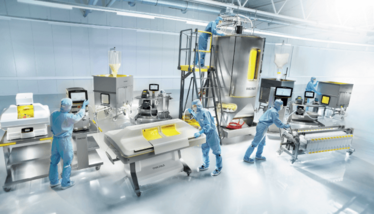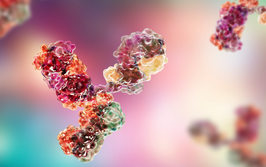
Success at Speed: Digging into Accelerated Vaccine Development
Part 4 – how to prepare for the rapid set-up of commercial manufacturing
Amélie Boulais, Piergiuseppe Nestola |
sponsored by Sartorius
A typical vaccine takes around 10 to 12 years to reach the market, giving developers ample time to consider strategies for mass manufacture. A key question: “Where should we base production?”
A company may plan to build a dedicated manufacturing facility in anticipation of a potential blockbuster (a risky approach – the vaccine could fail in phase III), or may decide to launch the vaccine out of the pilot facility.
Some vaccine manufacturers are now considering the use of flexible facilities that can accommodate the manufacturing of different vaccine types, depending on the demand, which is a challenge given the variability of current legacy vaccine processes.
The world is waiting for a vaccine
Given that there is no time to build new facilities, there are two options:
- Use existing facilities from established vaccine manufacturers. This option sounds good in theory, but there is limited capacity available – and a limited number of established vaccine players on the market. Companies like Sanofi, MSD, Pfizer, GSK, or the Serum Institute of India have production facilities dedicated to specific vaccines, but these facilities are not really flexible and the capacity to rapidly switch production to a potential COVID-19 candidate is limited. Moreover, these facilities are already producing important vaccines, and you don’t want to jeopardize their supply either; in other words, you don’t want to block COVID-19 only to create a polio or measles outbreak because of a supply limitation.
- Benefit from the production capabilities and expertise of CDMOs. Partnering with a CDMO can ease capacity constraints in house and allow a company to respond more quickly to changes in demand. There are hundreds of CDMOs across the world – and the potential to localize manufacture by different geographies. This network could help the industry to produce the first-generation COVID-19 vaccines. A variety of vaccine approaches are being taken to address COVID-19, but most rely on recombinant proteins, viral vectors or mRNA – and many CDMOs have expertise in this area. It may be more challenging, however, to find CDMOs capable of working with inactivated or live attenuated vaccines in a BSL3 environment.
Many new collaborations involving vaccine developers and CDMOs have been announced since the pandemic began – and we will likely see many more as vaccines begin to reach later trials. If you are going to go down the CDMO route, we recommend taking the following into account when choosing a CDMO to mitigate risks:
- Consider the CDMO’s expertise in your chosen vaccine platform (viral vectors, mRNA, recombinant protein, expression system, and so on). This point is crucial! You need to decide on the elements of the vaccine journey you wish to hand over to the CDMO – such as process development, manufacturing, downstream processing, packaging, regulatory approval, distribution, and so on. Consider the CDMO’s successful track record in all these areas.
- Verify the CDMO’s ability to produce in time – and check how they will achieve this goal. Will they work with third partners? Do they already have all the necessary equipment in place? Evaluate both the manufacturing capabilities and any potential sources of delay.
- Understand the CDMO’s experience in vaccine production. You should also examine if they have been adequately inspected by local or major health authorities. Some CDMOs are willing to share risks – and it’s a good sign if a CDMO proactively suggests ideas to mitigate risks for the project.
- Decide how you want the collaboration to look. Will you hand over the project completely, or do you prefer to be involved in each step? Addressing communication and project management is also crucial.

Process development must also move at lightning speed
In our experience, there is a direct correlation in process complexity versus issues in manufacturing. And so, we recommend a manufacturing process that is as simple as possible to help both smooth and accelerate scale up. Having a limited number of buffers or chromatography unit operations, for example, can offer dramatic advantages during scale up and commercial manufacturing.
Speed of manufacturing is also affected by the understanding of critical process parameters (CPPs). When scale up fails, it is often because process development was not performed properly or the CPPs were not well understood. A deep understanding of the CPPs will also aid tech transfer. It is not always possible to use the same equipment or consumables when transferring manufacturing to a new location – particularly during a pandemic when there isn’t time to perfectly replicate the original manufacturing set up. But if you understand your CPPs, you should be able to correctly assess the risks and modify the manufacturing process without affecting final drug product quality.
mRNA vaccines that can be manufactured using platform technologies have the potential to be scaled up very quickly, particularly given the straightforward unit operations. Viral vectors also have advantages in terms of speedy scale up because their downstream processing operations have significantly less unit operation compared with recombinant subunit processes, where two or three chromatography steps are generally required. Whatever type of vaccine you are making, you need to prepare for mass manufacturing early. You need to consider the supply chain, ensuring you have the right quantities of raw material for manufacturing and the right distribution network in place to get the vaccine to patients. And you need your large-scale equipment in place early. Large-scale equipment tends to have long lead times so engaging in early discussions with suppliers is important. And it’s worth considering single use, which can be deployed more rapidly than stainless steel. With single use, it’s possible to get a facility up and running in 12 months as opposed to the 24 months required for stainless steel. In terms of COVID-19, however, this is still slow. The world is waiting for a vaccine.
There are many paths that can be taken to help accelerate speed to commercial manufacture of a vaccine. If you are unable to use existing facilities and aren’t prepared to invest in a new single-use facility, then a CDMO can offer significant benefits – including expertise and production capabilities. Choose your partners carefully and once you find the collaboration that works for you, make sure they have a good understanding of your product in the early stages of process development. If your manufacturing partner is ready to hit the ground running when you need to get moving with mass manufacturing, you’ll be able to bring your vaccine to patients much sooner.
Find out more: http://ow.ly/6wpi50AFT0x
Head of Market Entry Strategy, Virus Based Therapeutics at Sartorius.



















